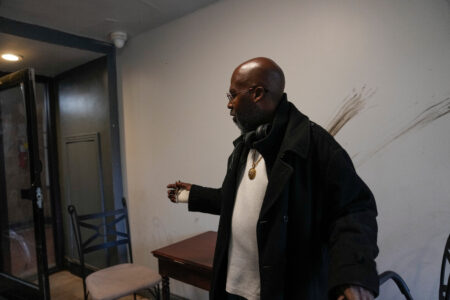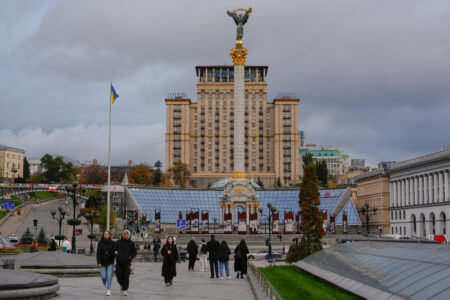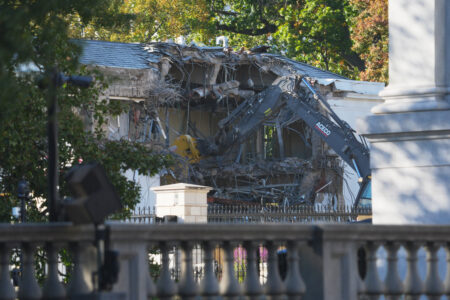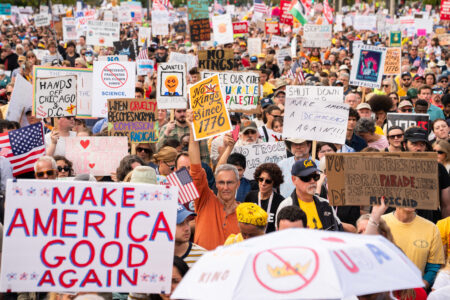Immigration crackdown escalates in Chicago
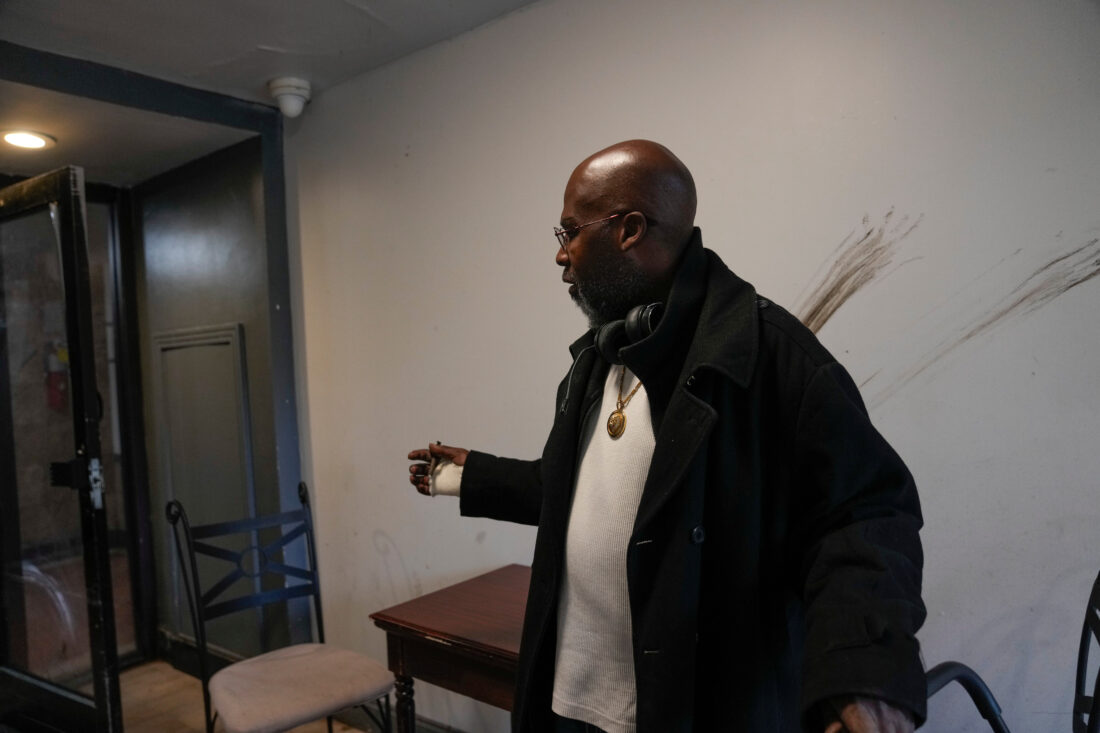
Resident Alex Mannings, who said he was awakened by federal agents during a Sept. 30 raid of the building at 7500 South Shore Drive in Chicago, speaks on Oct. 10. He described how, "they put me in zip ties, ran my social security number federally, saw that I didn't have any warrants, and let me go." (AP Photo/Erin Hooley)
CHICAGO (AP) — The music begins low and ominous, with the video showing searchlights skimming along a Chicago apartment building and heavily armed immigration agents storming inside. Guns are drawn. Unmarked cars fill the streets. Agents rappel from a Black Hawk helicopter.
But quickly the soundtrack grows more stirring and the video — edited into a series of dramatic shots and released by the Department of Homeland Security days after the Sept. 30 raid — shows agents leading away shirtless men, their hands zip-tied behind their backs.
Authorities said they were targeting the Venezuelan gang Tren de Aragua, but only two of the 37 immigrants arrested were gang members. The others were in the country illegally, they said, including some with criminal histories. One U.S. citizen was arrested on an outstanding narcotics warrant.
But the apartments of dozens of other U.S. citizens were also targeted, residents said, and at least a half-dozen Americans were held for hours.
The immense show of force signaled a sharp escalation in the White House’s immigration crackdown and amplified tensions in a city already on edge.
“To every criminal illegal alien: Darkness is no longer your ally,” Homeland Security said in a social media post accompanying the video, which racked up more than 6.4 million views. “We will find you.”
But Tony Wilson, a third-floor resident born and raised on Chicago’s South Side, sees only horror in what happened.
“It was like we were under attack,” Wilson said days after the raid, speaking through the hole where his door knob used to be. Agents had used a grinder to cut out the deadbolt, and he still couldn’t close the door properly, let alone lock it. So he had barricaded himself inside, blocking the door with furniture.
“I didn’t even hear them knock or nothing,” said Wilson, a 58-year-old U.S. citizen on disability.
The raid was executed in the heart of South Shore, an overwhelmingly Black neighborhood on Lake Michigan that has long been a tangle of middle-class dreams, urban decay and gentrification.
It’s a place where teams of drug dealers troll for customers outside ornate lakeside apartment buildings. It has some of the city’s best vegan restaurants but also takeout places where the catfish fillets are ordered through bullet-proof glass.
It has well-paid professors from the University of Chicago but is also where one-third of households scrape by on less than $25,000 a year.
The apartment building where the raid occurred has long been troubled. Five stories tall and built in the 1950s, residents said it was often strewn with garbage, the elevators rarely worked and crime was a constant worry. Things had grown more chaotic after dozens of Venezuelan migrants arrived in the past few years, residents said. While no residents said they felt threatened by the migrants, many described a rise in noise and hallway trash.
Owned by out-of-state investors, the building hasn’t passed an inspection in three years, with problems ranging from missing smoke detectors to the stench of urine to filthy stairways. Repeated calls to a lead investor in the limited liability company that owns the building, a Wisconsin resident named Trinity Flood, were not returned. Attempts to reach representatives through realtors and lawyers were also unsuccessful.
Crime fears spiked in June when a Venezuelan man was shot in the head “execution-style,” the Department of Homeland Security said in a statement. Another Venezuelan was charged in the death.
Days after the raid, the doors to dozens of the building’s 130 apartments hung open. Nearly all those apartments had been ransacked. Windows were broken, doors smashed, and clothes and diapers littered the floors. In one apartment, a white tuxedo jacket hung in the closet next to a room knee-deep in broken furniture, piles of clothing and plastic bags. In another, water dripping from the ceiling puddled next to a refrigerator lying on its side. Some kitchens swarmed with insects.
Wilson said a trio of men in body armor had zip-tied his hands and forced him outside with dozens of other people, most Latino. After being held for two hours he was told he could leave.
“It was terrible, man,” he said. He’d barely left the apartment in days.
A city under siege?
Chicago, the White House says, is under siege.
Gang members and immigrants in the U.S. illegally swarm the city and crime is rampant, President Donald Trump insists. National Guard soldiers are needed to protect government facilities from raging left-wing protesters.
“Chicago is the worst and most dangerous city in the World,” he posted on Truth Social.
The reality is far less dramatic. Violence is rare at protests, though angry confrontations are increasingly common, particularly outside a federal immigration center in suburban Broadview. And while crime is a serious problem, the city’s murder rate has dropped by roughly half since the 1990s.
Those realities have not stopped the Trump administration.
What started in early September with some arrests in Latino neighborhoods, part of a crackdown dubbed “Operation Midway Blitz,” has surged across Chicago. There are increasing patrols by masked, armed agents; detentions of U.S. citizens and immigrants with legal status; a fatal shooting; a protesting pastor shot in the head with a pepper ball outside the Broadview facility, his arms raised in supplication.
By early October, authorities said more than 1,000 immigrants had been arrested across the area.


